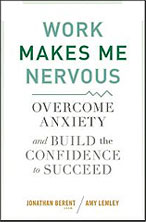Training to Resolve Selective Mutism
At age 56, I have been exercising for most of my life – primarily a healthy obsession with aerobic activity. I recently hired a trainer. I told him that my objective was to be able to play basketball a couple of times a week without back and knee pain. Three months later, after a regimen of cross training including Pilates and weight training, it appears that I have met my objective. Believe me, my workouts – where I invested in using different muscles with the trainer- were hard, and they paid off!
Using the metaphor that the brain is a muscle, consider a similar dynamic to help your dependent (or yourself) with selective mutism. The diagnosis for selective mutism is very simple. If you know that your child/dependent does speak, but to specific people or in specific venues does not, selective mutism is present. Selective mutism is social phobia. It can be considered an “addiction to the avoidance of speaking” – a speaking phobia. The mutism is the tip of the iceberg, however. (Note: It was not the tip of the iceberg that sank the Titanic; it was the ice underneath the water.) The underlying dynamics of selective mutism include a complex integration of attitude, cognition, behavior, emotion, and physiology. In treating selective mutism, it is, of course, important to identify other diagnostic issues, including possible “processing” and/or medical challenges.
How to “empower” – not “enable” – selective mutism
Over the many years in working with individuals suffering from social anxieties, I have discovered that parents have the ability to “empower” their social anxiety challenged children on one hand, and, on the other, to cripple them with “enabling.” This statement is not meant to place blame, but it is a reality.
Dealing with the selectively mute child can be dauntingly stressful. But the earlier you, as parents are aware of the problem, the greater the opportunity to help your children overcome this social phobia. Adults with social anxiety or selective mutism have the self-initiative needed to employ “cross training.” Children do not have this self-initiative, and need parental intervention. The average age of my patients since 1978 has been 27 years. This underscores the fallacy of the common belief that the “shy” or socially anxious child will simply grow out of the problem. If the problem is identified early, there is a far greater ability to resolve anxiety before it weaves its way into the personality, fostering over-dependent and avoidant characteristics. Avoidance and dependence can be the basis for specific personality disorders.
It is imperative for effective cross training that the concept of “enabling” is clearly understood. It means any behavior by a care-giver that inhibits the growth or potential of the child/dependent – of any age.
“Cross training” means learning how not to enable the problem. It means doing things differently – using different muscles to build potential and develop skills. A well known expert in selective mutism told the family of a six-year-old, “tell her she does not have to talk.” This “paradoxical” strategy was effective in temporarily reducing the stress. The problem was that at age eight the child was still investing in the concept of “you don’t have to talk,” and the parents had no idea of what to do. The “expert” left out the non-enabling part of the therapeutic strategy. Long-term productivity was not achieved. The family came to me two years after seeing the “expert.”
“Enabling” promotes primitive brain functioning, even though many selectively mute children (and adults) are very intelligent. It creates an illusion-delusion for the dependent, meaning that the child is learning that the world will adjust to him instead of his having to learn how to adjust to the world. Non-enabling, which is “cross training,” will empower the potential of your dependent. “Cross training” must be done methodically. It creates stress for both caregivers and child. It is imperative to learn how to channel this stress into positive energy.
Parents can learn how to facilitate the potential of their children by learning to be the therapist. Click here to hear, first-hand, stories of families who learned effective “cross training.”
For parents who believe that your child only has the problem in school because he or she is “normal” at home, consider that selective mutism is a form of performance anxiety, manifested primarily in pressure or challenge venues such as school. For this reason, the skill of “cross training” should be developed by school personnel as well as parents. This can only be implemented productively after parents learn their strategy. If not, fragmentation and distress will result. If teachers are not taught therapeutic strategies at the beginning of school it is very easy to lose the year to “enabling” in the academic environment.
Remember, time is your most valuable asset in treating selective mutism and social anxieties – and a crucial component of any “cross training.”
Empower yourself and your dependent!
Self-Help and Treatment Options
- Free Audio CD from Social-Anxiety.com
- Social Anxiety: The Untold Story
- Beyond Shyness: How To Conquer Social Anxieties
- Work Makes Me Nervous
- Comprehensive Self-Therapy Audio Program
- Public Speaking Anxiety Self-Therapy Audio Program
- “Warm Hands Cool Face” A Self-Help Clinical Program for Blushing Anxiety & Erythrophobia
- The Berent Method: High Performance Therapy for Social-Anxiety
- Telephone/skype therapy available worldwide
- Selective Mutism Seminar Audio CD/MP3 Program
- Self-Help Program for Parents of Children with Selective Mutism
- The Sociability Questionnaire
- Tip of the Month Club
- Social Therapy and The Learning Disabled
- Free Parent Addiction Survey


